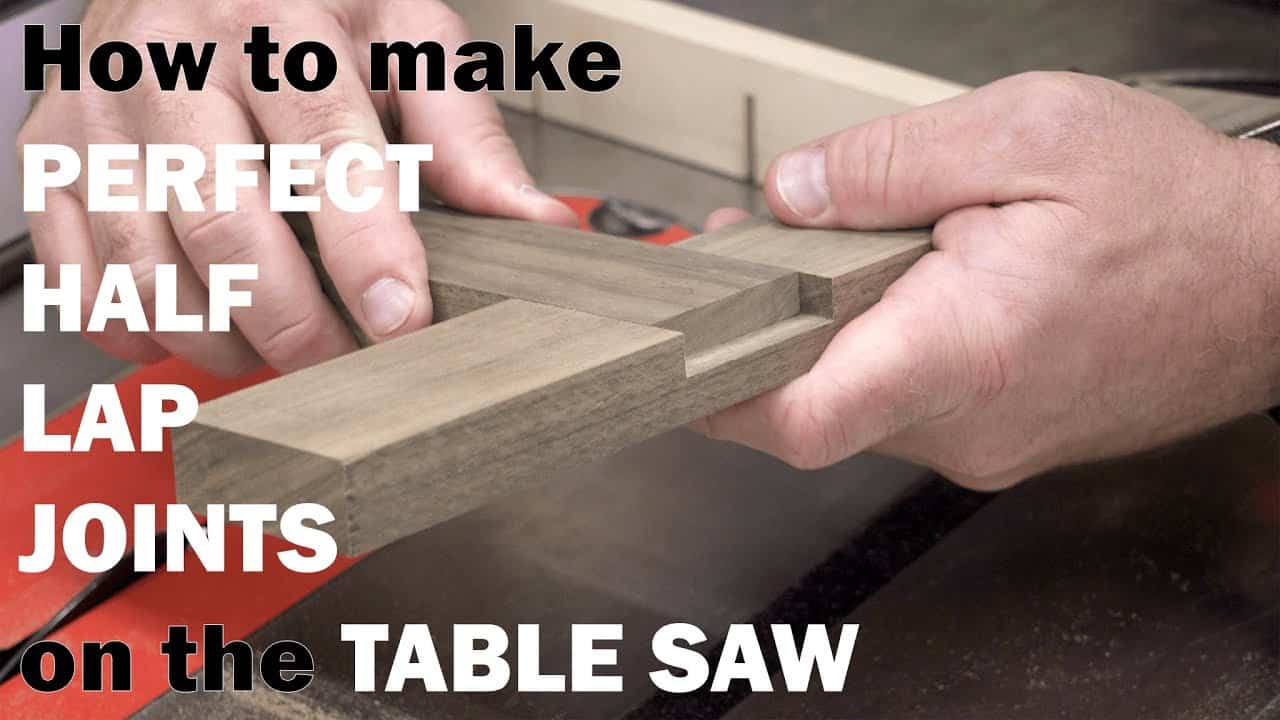Jodee from Inspire Woodcraft shared the woodworking tip featured in this video.
This video demonstrates a reliable, measurement-light method for cutting half lap (half flap) joints at the table saw using the parts themselves to set critical dimensions.
The approach emphasizes working from the actual material, a blade-width shim, and a flat-grind blade to get glue-ready mating surfaces without complicated layout.
Watch the full video and subscribe to Inspire Woodcraft:
Overview
The technique shown focuses on using the workpieces themselves to register cuts instead of relying on pencil marks or measuring tools. It pairs a simple miter-gauge setup with a plywood auxiliary fence, a stop block, and a purpose-made shim cut to the exact width of the saw blade.
This method is especially useful for shops without a dado stack or where a dado is not an option, and it produces flat-bottomed cuts when used with a flat-grind blade. The goal is a tight, flush half lap that can be cleaned up easily with a plane, scraper, or light sanding.
Setup and Tools
A straightforward setup keeps the work repeatable: a miter gauge fitted with a plywood auxiliary fence, a small stop block clamped to that fence, and a spring clamp to hold stops in place. If a crosscut sled is available, it would be an ideal substitute for the miter gauge.
The key tool in this approach is the shim, cut to the exact kerf width of the blade being used. Also important is choosing a blade with a flat tooth grind if the builder wants a glue-ready flat bottom; conventional blades will leave peaks and valleys that need additional cleanup.
Finding Blade Height Without Measurements
Instead of measuring half the thickness of a board, the video shows a “nibble until centered” method: take small passes from each side until only a very thin web of material remains. That thin web indicates the blade plane is nearly centered through the thickness and the blade height can be locked in.
This iterative approach avoids precise marking and lets the material itself guide the setup, which is useful when working with variable stock or when speed is preferred over absolute numeric precision. A few test passes are expected and acceptable for dialing in the height.
Cutting the Half Lap Using a Shim
With the blade height set, the shim is used to offset the saw kerf so each mating part loses only the intended amount of material. The workflow is: register the board against the fence, slide the shim next to the blade, make the pass, remove the shim, and clear the waste.
Because both mating pieces are the same stock and orientation is consistent, the stop block does not need to be moved between identical cuts. This speeds up repeatable work and helps ensure both halves match closely when test-fitted.
Cutting Laps in the Middle of a Board
The same principles apply when cutting a half lap away from an end: set the fence to register the desired location, use the shim for the first cut, then register the mating piece and make the opposing cut before removing the waste.
The video shows the operation at a six-inch location as an example of mid-board joinery.
Raising the blade a hair can improve the fit in some cases, but the author notes that slight variations are easy to correct with a plane or finish sanding. The emphasis is on getting a snug, flush joint that’s simple to refine rather than obsessing over perfect numbers.
Why This Technique Works
Relying on the actual workpieces for registration reduces layout errors and keeps the mating faces consistent. The blade-width shim compensates for the kerf so opposite cuts meet cleanly without double-cutting or oversized waste removal.
Using a flat-grind blade makes a significant difference in final fit and glue-up readiness, as it leaves a flat bottom that needs less cleanup.
For shops without a dado stack, this method is a practical alternative that still produces professional results.
Practical Tips and Adaptations
Builders can adapt the method to different blade types by accepting a bit more cleanup, or they can make a shim to match whatever blade is on the saw. A crosscut sled, if available, will improve accuracy and safety for repeat cuts but is not required.
Small deviations in fit are normal and usually removable with a plane or sanding. The approach trades exact numeric layout for a predictable, repeatable workflow that streamlines joinery in a typical home shop.
Conclusion
This tip offers a fast, reliable way to make half lap joints at the table saw by working from the material, using a blade-width shim, and favoring a flat-grind blade for cleaner mating surfaces.
The method is adaptable, minimizes marking, and produces joints that are easy to finish and glue up.
Support Jodee by visiting his online store here: https://inspirewoodcraft.com/collections/all.
